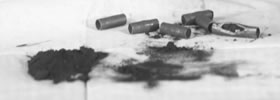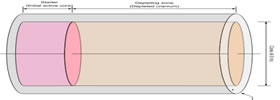
Full Recycle (Fully Closed) Fuel Cycle
The goal of a fully closed fuel cycle will allow power plants to use long-lived actinide elements to be repeatedly recycled rather than disposed. The ultimate goal is to develop a cost-effective and low proliferation risk approach that would dramatically decrease the long-term danger posed by the waste, reducing uncertainties associated with its disposal.
With completely closed fuel cycles, only high-level waste forms are disposed in a responsitory. The recycling of plutonium to LWRs asuch as MOX increases uranium utilization to a small extent. Recycling fissile materials in fast reactors combined with breeding in depleted and recycled uranium can enable uranium utilization ot approach 99%.
Partitioning & Transmutation

Partitioning and transmutation (P&T) aims at making nuclear energy more sustainable from the viewpoint of the back-end of the fuel cycle by minimising the high-level waste with respect to its mass, radiotoxicity and repository risk. The conditions for a completely closed fuel cycle, the goals for transmutation, and the implications for the reactor and fuel cycle require further study and SNRI's goal is to fill that knowledge gap.
Example Concepts

Key elements of the Modified Open Fuel Cycle include
- Breed and burn recycle reactor concepts (including the traveling wave designs)
- Deep burn of recycled transuranics in high-temperature gas reactors (requires fuel processing)
- Deep burn of recycled transuranics in inert matrix fuels
Research Projects

Modified open cycles can be made possible by designing a system that utilizes new a novel concepts currently being analyzed by SNRI. Additionally, SNRI will need to further develop fuel forms that accomodate much higher exposure and develop conditioning processes that avoid complex chemical operations. The goal for Anshar is to move to a modified open cycle by 2045. To accomplish Anshar's goal, SNRI is looking to complete all R&D work in the next 8 years. A focused effort will be needed to meet this goal.
>> Read MoreInspection & X-Rays

SNRI is developing an automated, real-time fuel rod inspection technique for better speed and accuracy using an X-Ray tomographic inspection technique to detect anomolies.
>> Read Morecontact us
Have questions? Need information? Looking for employment? SNRI is constantly seeking to engage with driven, innovative, and team oriented researchers, analysts, engineers. Contact us about potential research projects and joint opportunities!